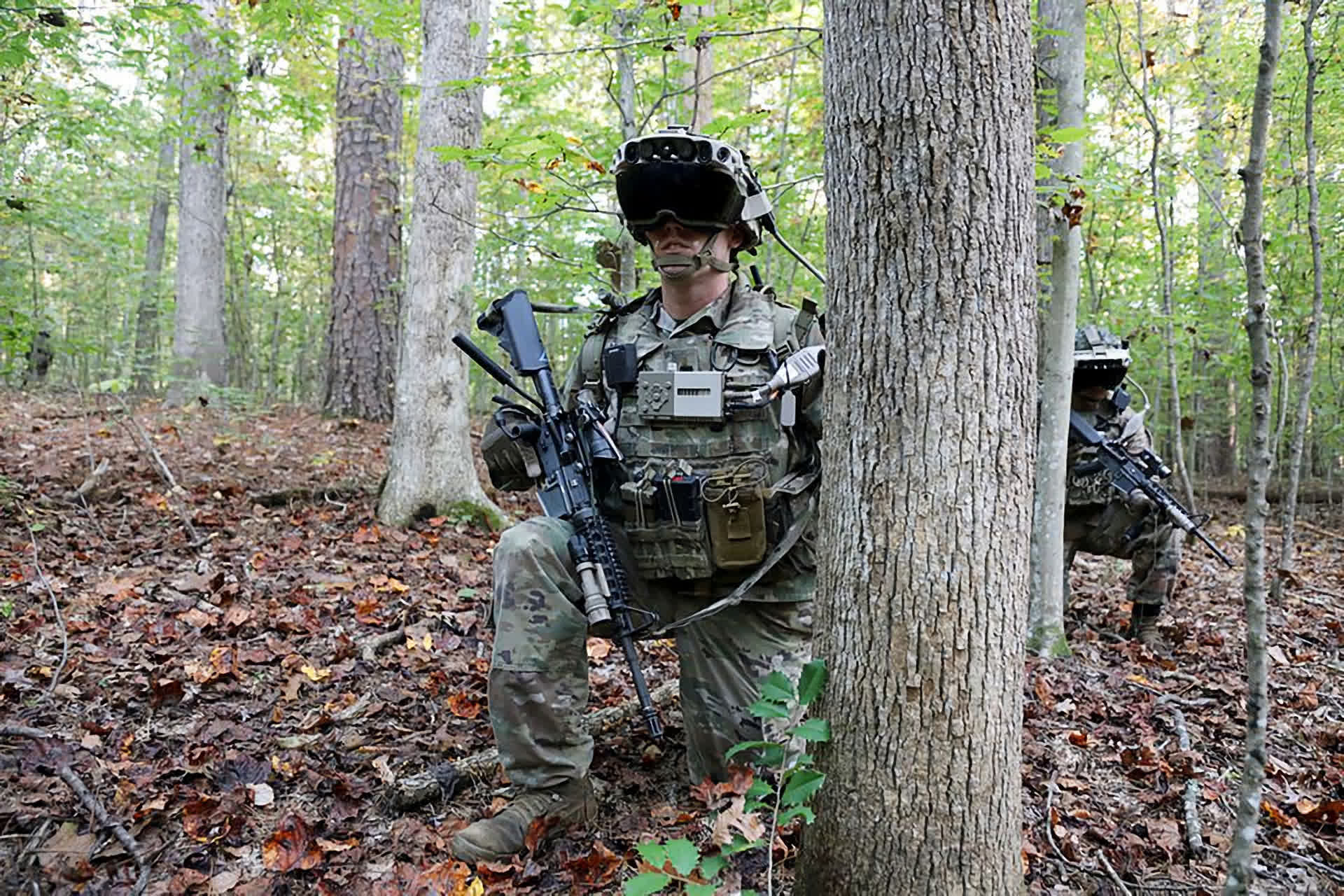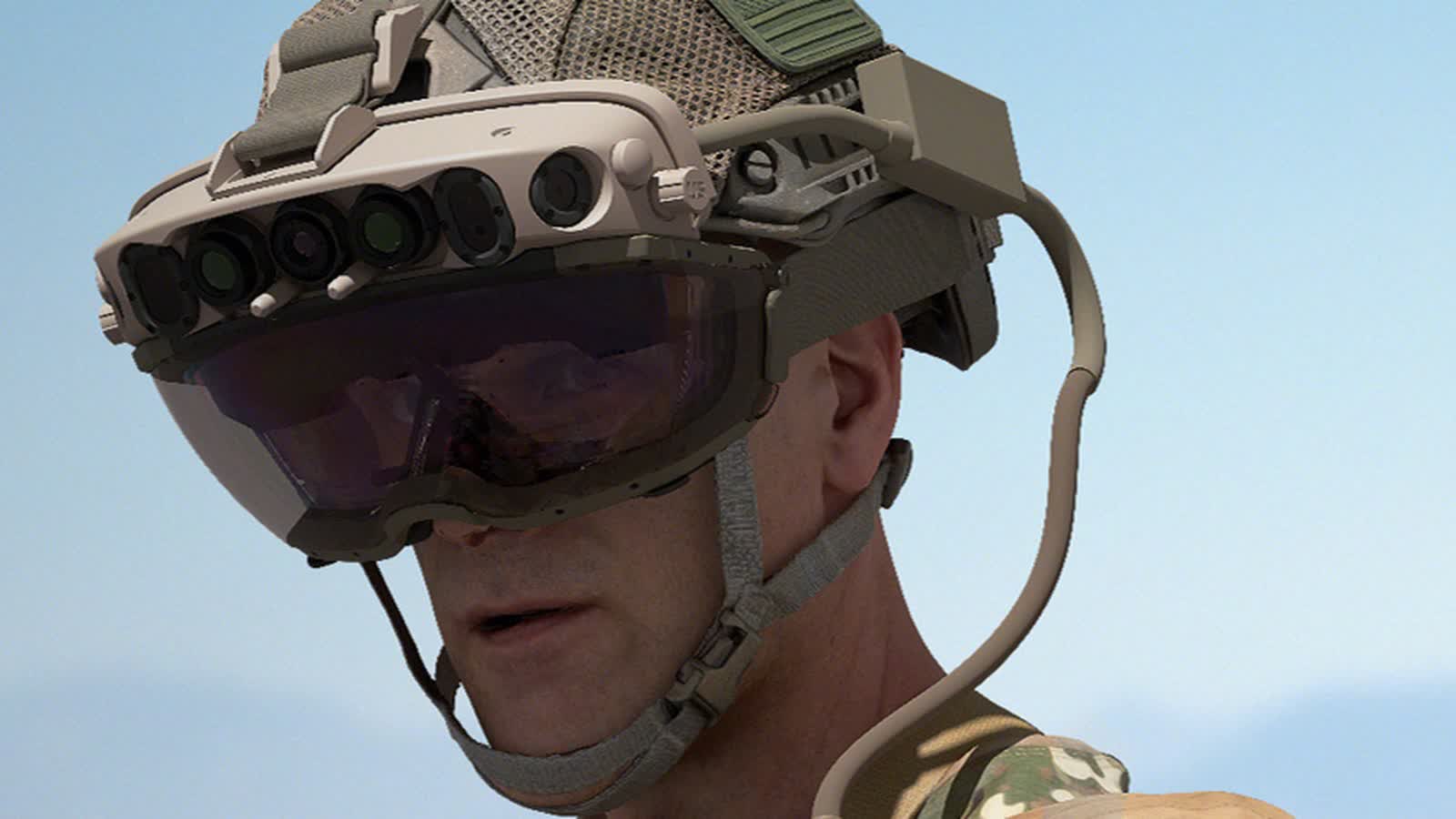In a nutshell: The HoloLens-based goggles that Microsoft is selling to the US Army have had a long and difficult history. While the hardware and software issues of the early models appear to have been addressed in the latest version, the problem now is the price: the military branch wants the headsets to “be substantially less” than the current cost of $80,000 per unit.
Back in 2018, Microsoft began prototyping the Integrated Visual Augmentation Systems (IVAS) augmented reality glasses and was awarded a $480 million contract by the Army for 100,000 units.
The initial agreement was expanded in March 2021, ensuring Microsoft will provide finalized production versions, parts, and support in an agreement potentially worth up to $21.9 billion across a decade. The Army ordered an initial 5,000 units, valued at $373 million, with around 121,000 to be delivered over the course of the deal.
The project has been far from smooth from the beginning. The goggles’ rollout was pushed back from fiscal year 2021 to 2022, but the Army said it remained fully committed to the deal.
In April 2022, the DOD warned that the massive purchase could be a waste of taxpayer money. There was worse news for Microsoft that year when an army tester said that the headsets pose a danger to soldiers due to the light they generate while active, which could alert enemy forces to a wearer’s location.
There were also other complaints about the headsets, such as limiting a soldier’s field of view, including their peripheral vision, when worn. Most worryingly of all, soldiers reportedly hated them as they caused headaches, eye strain and nausea, symptoms that 80% of testers said appeared within three hours of use. The devices’ failure to perform essential functions was also a concern.
Congress refused an Army request to spend $400 million to buy 6,900 IVAS headsets last year. Instead, it approved $40 million for Microsoft to build a new and improved version.
The Army has been testing the slimmer prototype of the IVAS headset and found that many of the previous issues have been fixed.
At the annual Association of the US Army conference (via Bloomberg) Army acquisition chief Doug Bush said the unit cost of the IVAS goggles would be a key factor next year when senior leaders make decisions about going into full production. The Army said the pricing goal “is it be substantially less than $80,000.”
“We still have to be able get something that’s affordable,” said Bush.
Bloomberg notes that the IVAS’ heads-up display, battery and chest unit make up $41,824 of the current price. The rest includes increased expenditures, from Army program management to Microsoft engineering and software support costs.
Microsoft is trying to help the army meet its goal of a cheaper headset. “We are going through the program to identify where we can reduce costs,” Robin Seiler, Microsoft’s corporate vice president for Mixed Reality, told reporters.
“It’s a fairly complex system, so when you look at cost reduction you have to look at it from a component level, from a labor level and from your supply chain,” Seiler added.
The IVAS units combine high-resolution night, thermal, and soldier-borne sensors into a heads-up display. Powered by Microsoft Azure cloud services, they also leverage augmented reality and machine learning to enable a life-like mixed-reality training environment.
Earlier this month, Microsoft ended production of its HoloLens 2 headset with no plans for a successor. The company emphasized at the time that it remains “fully committed” to IVAS.








